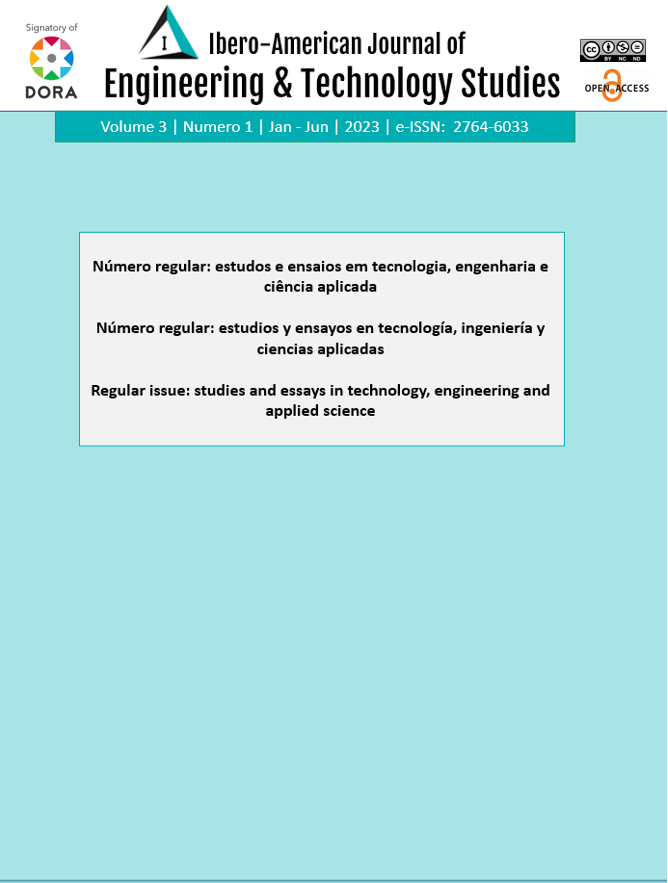Guía práctica para la modernización de turbinas industriales a vapor, mediante el dimensionamiento de sus principales equipos y sistemas a intervenir
DOI:
https://doi.org/10.56183/iberotecs.v3i1.616Palavras-chave:
modernización de turbinas industrialesResumo
La modernización de procesos industriales es vital para mantener el giro de negocio de la manufactura. La mayoría de turbinas de vapor fueron creadas hace más de 30 años en la escala temporal, muchas de ellas indispensables para la generación de electricidad. Las Turbinas de vapor pueden entregar de manera fiable y eficiente inclusive de 100 a 200 MW al sistema nacional interconectado. La tecnología que acopla una turbina y sus sistemas auxiliares a un generador, se sigue desarrollando y es utilizada a gran escala a nivel mundial. En este artículo, se propone un esquema de automatización del sistema de control y sus sistemas de funcionamiento, de manera que toda empresa que este en camino de modernizar el equipo, pueda seguir esta guía para tener un sistema fiable.
Referências
Abbas Fotouhi, Rubiyah Yusof, Rasoul Rahmani, Saad Mekhilef, and Neda Shateri. A review on the applications of driving data and traffic information for vehicles energy conservation. Renewable and Sustainable Energy Reviews, 37(Supplement C):822 – 833, 2014.
Apurba Sakti, Jeremy J. Michalek, Erica R.H. Fuchs, and Jay F. Whitacre. A technoeconomic analysis and optimization of li-ion batteries for light-duty passenger vehicle electrification. Journal of Power Sources, 273(Supplement C): 966 – 980, 2015.
Apurba Sakti, Jeremy J. Michalek, Erica R.H. Fuchs, and Jay F. Whitacre. A technoeconomic analysis and optimization of li-ion batteries for light-duty passenger vehicle electrification. Journal of Power Sources, 273(Supplement C):966 – 980, 2015.
G. Nielson and A. Emadi. Hybrid energy storage systems for high-performance hybrid electric vehicles. In 2011 IEEE Vehicle Power and Propulsion Conference, pages 1–6, Sept 2011.
Hanane Hemi, Jamel Ghouili, and Ahmed Cheriti. A real time fuzzy logic power management strategy for a fuel cell vehicle. Energy Conversion and Management, 80(Supplement C):63 – 70, 2014. 1056 Sapienza: International Journal of Interdisciplinary Studies | Vol. 3 | n. 1 | Jan-Mar | 2022 | e-ISSN: 2675-9780 Recebido: Aceito: Disponível: https://doi.org/10.51798/sijis.v3i1.282 Recebido: 05/01/2021 Aceito: 11/12/2021 Disponível: 15/02/2022
Hanane Hemi, Jamel Ghouili, and Ahmed Cheriti. Combination of markov chain and optimal control solved by pontryagin’s minimum principle for a fuel cell/supercapacitor vehicle. Energy Conversion and Management, 91(Supplement C): 387 – 393, 2015.
Himanshu Khurana, Mark Hadley, Ning Lu, and Deborah A Frincke. Smart-grid security issues. IEEE Security & Privacy, 8(1), 2010.
Hoke, A. Brissette, K. Smith, A. Pratt, and D. Maksimovic. Accounting for lithium-ion battery degradation in electric vehicle charging optimization. IEEE Journal of Emerging and Selected Topics in Power Electronics, 2(3):691– 700, Sept 2014. [8] J. Shen, S. Dusmez, and A. Khaligh. Optimization of sizing and battery cycle life in battery/ultracapacitor hybrid energy storage systems for electric vehicle applications. IEEE Transactions on Industrial Informatics, 10(4):2112–2121, Nov 2014.
Lijun Gao, R. A. Dougal, and Shengyi Liu. Power enhancement of an actively controlled battery/ultracapacitor hybrid. IEEE Transactions on Power Electronics, 20(1):236–243, Jan 2005.
M Devineni, A Dinger, M Gerrits, T Mezger, X Mosquet, M Russo, G Sticher, and H Zablit. Powering autos to 2020: the era of the electric car. Boston Consulting Group, 2011.
M. E. Choi, J. S. Lee, and S. W. Seo. Real-time optimization for power management systems of a battery/supercapacitor hybrid energy storage system in electric vehicles. IEEE Transactions on Vehicular Technology, 63(8):3600–3611, Oct 2014.
M.A. Hannan, F.A. Azidin, and A. Mohamed. Hybrid electric vehicles and their challenges: A review. Renewable and Sustainable Energy Reviews, 29(Supplement C):135 – 150, 2014.
M.A. Hannan, M.M. Hoque, A. Mohamed, and A. Ayob. Review of energy storage systems for electric vehicle applications: Issues and challenges. Renewable and Sustainable Energy Reviews, 69(Supplement C):771 – 789, 2017.
M.Y. Ayad, M. Becherif, and A. Henni. Vehicle hybridization with fuel cell, supercapacitors and batteries by sliding mode control. Renewable Energy, 36(10):2627 – 2634, 2011. Renewable Energy: Generation & Application.
Martin Redelbach, Enver Doruk Ozdemir, and Horst E. Friedrich. Optimizing battery sizes of plug-in hybrid and extended range electric vehicles for different user types. Energy Policy, 73(Supplement C):158 – 168, 2014.
P. Rodatz, G. Paganelli, A. Sciarretta, and L. Guzzella. Optimal power management of an experimental fuel cell/supercapacitor-powered hybrid vehicle. Control Engineering Practice, 13(1):41 – 53, 2005.
P. Thounthong, V. Chunkag, P. Sethakul, B. Davat, and M. Hinaje. Comparative study of fuel-cell vehicle hybridization with battery or supercapacitor storage device. IEEE Transactions on Vehicular Technology, 58(8):3892– 3904, Oct 2009.
Q. Xiaodong, W. Qingnian, and Y. YuanBin. Power demand analysis and performance estimation for activecombination energy storage system used in hybrid electric vehicles. IEEE Transactions on Vehicular Technology, 63(7):3128–3136, Sept 2014.
Richard G Newell and Stuart Iler. The global energy outlook. Technical report, National Bureau of Economic Research, 2013. Sciarretta and L. Guzzella. Control of hybrid electric vehicles. IEEE Control Systems, 27(2):60–70, April 2007.
Shunping JIA, Hongqin PENG, Shuang LIU, and Xiaojie ZHANG. Review of transportation and energy consumption related research. Journal of Transportation Systems Engineering and Information Technology, 9(3):6 – 16, 2009.
T.M.I. Mahlia, R. Saidur, L.A. Memon, N.W.M. Zulkifli, and H.H. Masjuki. A review on fuel economy standard for motor vehicles with the implementation possibilities in Malaysia. Renewable and Sustainable Energy Reviews, 14(9):3092–3099, Dec 2010.
Tedjani Mesbahi, Fouad Khenfri, Nassim Rizoug, Khaled Chaaban, Patrick Bartholome us, and Philippe Le Moigne. Dynamical modeling of li-ion batteries for electric vehicle applications based on hybrid particle swarm– nelder–mead (pso–nm) optimization algorithm. Electric Power Systems Research, 131(Supplement C):195 – 204, 2016.
Downloads
Publicado
Edição
Seção
Licença
Copyright (c) 2023 Joseph Eli Izquierdo-Obando, Martha Leticia Moreno-Samaniego, Fernando Andrés Ortiz-Ballesteros, Elena Balarezo, Mauricio Alberto Masache-Heredia

Este trabalho está licenciado sob uma licença Creative Commons Attribution-NonCommercial-NoDerivatives 4.0 International License.


